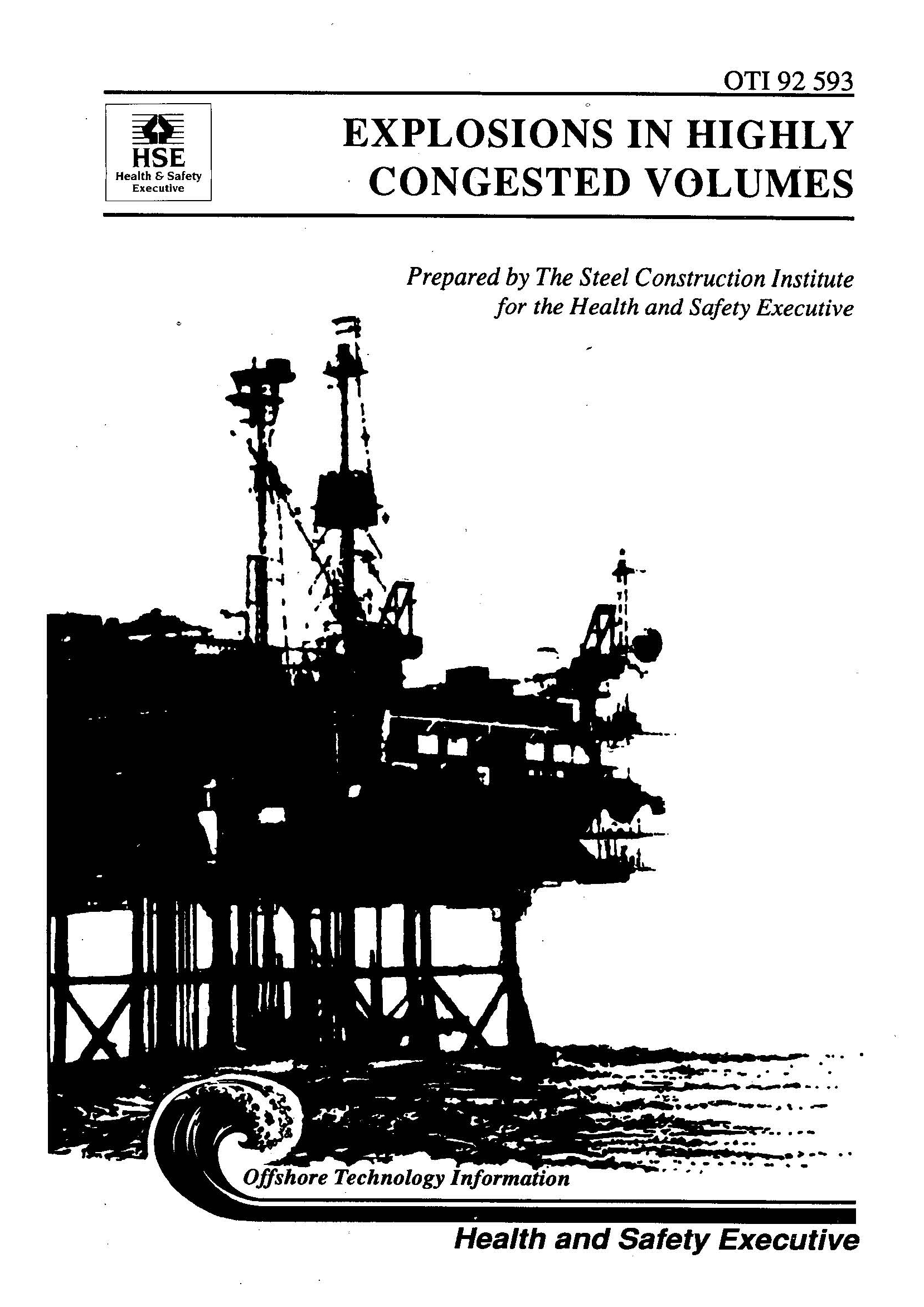HSE OTI 92 593
Explosions in highly congested volumes
Work Package BL3
BFETS Phase 1

FABIG Members: Log-in to access all FABIG resources LOG IN
SUMMARY
This report reviews information on theoretical and experimental research into explosions in highly congested volumes. This information is relevant to the problem of predicting explosion overpressures in most offshore modules.
Current understanding of the detailed mechanisms responsible for explosion in confined, congested volumes such as offshore modules is limited and an active topic for current research progress. The experimental data base directly relevant to the offshore problem is also very limited and has relevance only to very few offshore module geometries. In addition, most of this data has been obtained on a scale very much smaller than the realistic situation. In particular, data is lacking for obstacle configurations which are representative of the scale of those found offshore, and for flammable mixtures containing liquid hydrocarbon droplets. Much more relevant data is required to appraise fully the accuracy of existing models and experimental scaling techniques.
This must be emphasized strongly since they are at present frequently being used to extrapolate to scales much larger than those from which the data base has been assembled. All predictive methods have uncertain accuracy and must be used with caution outside the scale and geometries of the experimental data against which they have been validated. Most are under ongoing development to improve their applicability to the offshore problem, and some entirely new models are being developed in recognition of limitations in existing approaches. A particular inadequacy is in modelling the combustion processes in representative obstacle configurations.
Theoretical models could in principle provide the most comprehensive means of extrapolating to the full-scale overpressures, but their predictive accuracy is limited. There can be no "standard practice" regarding the use of existing methods since in the majority of cases no neutral evaluation exists of their physics or of their predictive ability. Experimental studies have, however, identified simple rules of ranking different module geometries for their potential to give rise to explosion overpressure. In particular, field-scale model experiments with more reactive systems show some promise for revealing explosion phenomenology to be expected in full scale structures. These can be used to guide design engineers, but do not yet provide a means to quantify accurately the likely explosion overpressure.
Existing models which are currently being applied to offshore explosion hazard assessment range from empirically based models through phenomenological models, which attempt a simplified description of the observed physics of the processes, to numerical simulators. These latter attempt to solve the problem fully by addressing the fluid dynamics, thermodynamics and kinetics of the explosive combustion. However, although they have the potential to be flexible and comprehensive, they are also the most computationally demanding.
With the current state of knowledge in this area, design engineers should not rely on any single approach to explosion prediction in areas where the predicted value is of critical consequence.
The full report is publicly available from the HSE Website at www.hse.gov.uk/research/otipdf/oti92593.pdf.
Online purchase options:
Non-Members of FABIG are able to purchase PDF copies of the reports.